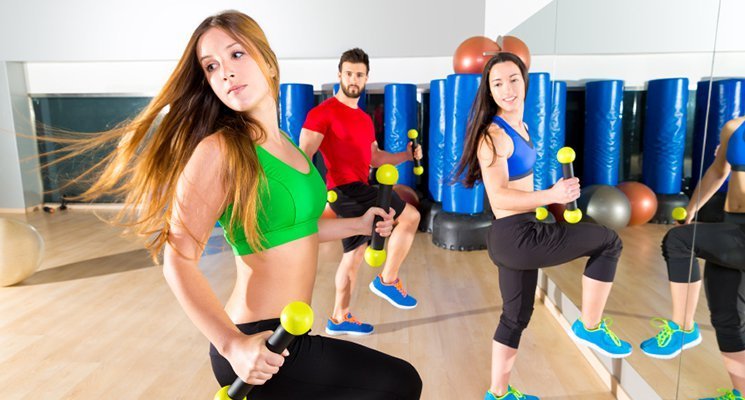Earlier this month, the American College of Sports Medicine released its annual American Fitness Index, ranking the fittest cities in America (congrats to the top three: Washington, D.C.; Minneapolis, MN; and Portland, OR). Boston, a city that prides itself on spiritedness and strength, celebrated to find itself in the top ten. Pulling in at number nine, Boston got points for its high number of farmers’ markets per capita, its high percentage of people using public transportation, biking or walking to work, and its high number of playgrounds per capita. Yet one of the areas in which the city ranked lowest was in access to exercise.
That’s about to change. In May, the Executive Director of Boston’s Public Health Commission, Barbara Ferrer, announced the Boston Parks Summer Fitness Series, a three-month program offering free exercise classes in 18 parks throughout the city. Classes will include, among others, salsa dancing, yoga, tai chi, Zumba, and Zumba Gold.
When a community becomes more aware of healthy living and the role of exercise in improving health and making a brighter future, everyone benefits—including gyms, health clubs, fitness centres, and the like. It’s almost like free advertising for the services you sell. After three months of regularly using a similar service, some people are bound to come seeking your services when the program ends. I guarantee that some facilities in and around Boston will be signing up new members come the end of August.
Chances are, your city is offering something similar. Free, municipally-run, summer exercise programs have become something of a trend in the past five years or so. That trend will only continue to grow. But why wait for your city to do the work? Why compete with your city? Why not become an entity helping your community to get fitter—while introducing the community to the benefits and wonders of your particular facility? You don’t want the summer to end and new exercise enthusiasts going to the gym down the road. You want them coming to yours. Offering a free summer program yourself is a good way to get them to do so.
Of course, as with anything, you have to weigh the benefits with the costs. Still, even a limited program—say, one free yoga class or one free Zumba class per week throughout the summer—will bring new potential members into your club. Once they’re in there, they’ll see what else you have to offer. You’ll be helping the community get fitter, and they’ll be walking out the door with memberships. It’s a win-win opportunity. And who knows, maybe next year, your own city will end up in the American Fitness Index top ten.




 Wandering around among witches, dragons, princesses, and Harry Potters this Halloween, I watched my own little ninja’s jack-o-lantern fill up with various forms of sugar, and I despaired — not at the thought of all the junk food he’d be consuming, because I knew that after a few days the novelty would wear off and he’d forget about it, but at the thought of all the tempting treats that would be sitting in my cabinet over the next couple months. While I’m pretty good at defeating sugar cravings day to day, Halloween candy undoes me. There’s so much of it, it’s all so accessible (when my son’s not looking), and it ignites so many nostalgic childhood pleasures.
Wandering around among witches, dragons, princesses, and Harry Potters this Halloween, I watched my own little ninja’s jack-o-lantern fill up with various forms of sugar, and I despaired — not at the thought of all the junk food he’d be consuming, because I knew that after a few days the novelty would wear off and he’d forget about it, but at the thought of all the tempting treats that would be sitting in my cabinet over the next couple months. While I’m pretty good at defeating sugar cravings day to day, Halloween candy undoes me. There’s so much of it, it’s all so accessible (when my son’s not looking), and it ignites so many nostalgic childhood pleasures.
 In New York City, it’s common for schools to raise funds by holding yearly auctions. In the months leading up to an auction, parents stump all around town, trying to win donations from local businesses so auction attendees will have a wide variety of items on which to bid. Common donations include free piano lessons, handmade jewelry, restaurant gift certificates — and month-long gym memberships.
In New York City, it’s common for schools to raise funds by holding yearly auctions. In the months leading up to an auction, parents stump all around town, trying to win donations from local businesses so auction attendees will have a wide variety of items on which to bid. Common donations include free piano lessons, handmade jewelry, restaurant gift certificates — and month-long gym memberships.
 For many gyms, the end-of-summer push for new members is coming to a close; that effort won’t be ramped up again for another six months or so. So what do you concentrate on in the meantime? Retaining members, of course! As profitable as new sign-ups, or sometimes, with upselling, more profitable, retaining members is a goal all clubs have — but the goal is sometimes elusive. Here are a few refresher tips on retaining members effectively.
For many gyms, the end-of-summer push for new members is coming to a close; that effort won’t be ramped up again for another six months or so. So what do you concentrate on in the meantime? Retaining members, of course! As profitable as new sign-ups, or sometimes, with upselling, more profitable, retaining members is a goal all clubs have — but the goal is sometimes elusive. Here are a few refresher tips on retaining members effectively.
 In this industry, there’s a lot of talk about happiness – as well there should be. In recent years, studies have suggested that the presence or absence of happiness affects us at a cellular level: When we’re happy, our tissues suffer less damage, our bodies have less inflammation, and our immune systems are stronger. Because we know that regular exercise contributes to greater happiness, we remind our clients that coming to the gym is good for them, that it’ll make them happier. But, in the light of a recent study, maybe we should wonder whether we’re giving happiness enough thought.
In this industry, there’s a lot of talk about happiness – as well there should be. In recent years, studies have suggested that the presence or absence of happiness affects us at a cellular level: When we’re happy, our tissues suffer less damage, our bodies have less inflammation, and our immune systems are stronger. Because we know that regular exercise contributes to greater happiness, we remind our clients that coming to the gym is good for them, that it’ll make them happier. But, in the light of a recent study, maybe we should wonder whether we’re giving happiness enough thought.
 We live in interesting times. The convergence of reality television with the national obesity crisis and a new level of health obsession has created opportunities for the fitness industry that never existed before. Last month, CBS’s Undercover Boss featured the CEO and founder of New-Jersey based Retro Fitness; last year, the CEO of Modell’s sporting goods shop appeared on the show. Now, a new season of Extreme Makeover: Weight Loss Edition is starting up on ABC, and exercise technology company NuStep has a product in the limelight.
We live in interesting times. The convergence of reality television with the national obesity crisis and a new level of health obsession has created opportunities for the fitness industry that never existed before. Last month, CBS’s Undercover Boss featured the CEO and founder of New-Jersey based Retro Fitness; last year, the CEO of Modell’s sporting goods shop appeared on the show. Now, a new season of Extreme Makeover: Weight Loss Edition is starting up on ABC, and exercise technology company NuStep has a product in the limelight.
 Recently, Colleen Kennedy, the director of membership at The Houstonian Club, wrote a blog about an innovative sales program at her Houston-based fitness facility. They call it The Houstonian Lotto, and Kennedy says that it has been instrumental in increasing both sales and referrals. She also says that it’s a program any club can duplicate — and that it costs little (…)
Recently, Colleen Kennedy, the director of membership at The Houstonian Club, wrote a blog about an innovative sales program at her Houston-based fitness facility. They call it The Houstonian Lotto, and Kennedy says that it has been instrumental in increasing both sales and referrals. She also says that it’s a program any club can duplicate — and that it costs little (…)
 After a debilitating hurricane in the fall and a seemingly endless winter, spring finally has arrived in New York City. The trees poking up from the sidewalk have fully let their green hair down; Central Park is overflowing with tulips, bluebells, pansies, and forsythia; and exercisers are out in droves. Yes, all those people who spent the long, inhospitable months of fall and winter in the gym are now donning their jogging shoes and mounting their bicycles. They want to feel the warmth of the sun as they work out. They want fresh air.
After a debilitating hurricane in the fall and a seemingly endless winter, spring finally has arrived in New York City. The trees poking up from the sidewalk have fully let their green hair down; Central Park is overflowing with tulips, bluebells, pansies, and forsythia; and exercisers are out in droves. Yes, all those people who spent the long, inhospitable months of fall and winter in the gym are now donning their jogging shoes and mounting their bicycles. They want to feel the warmth of the sun as they work out. They want fresh air.